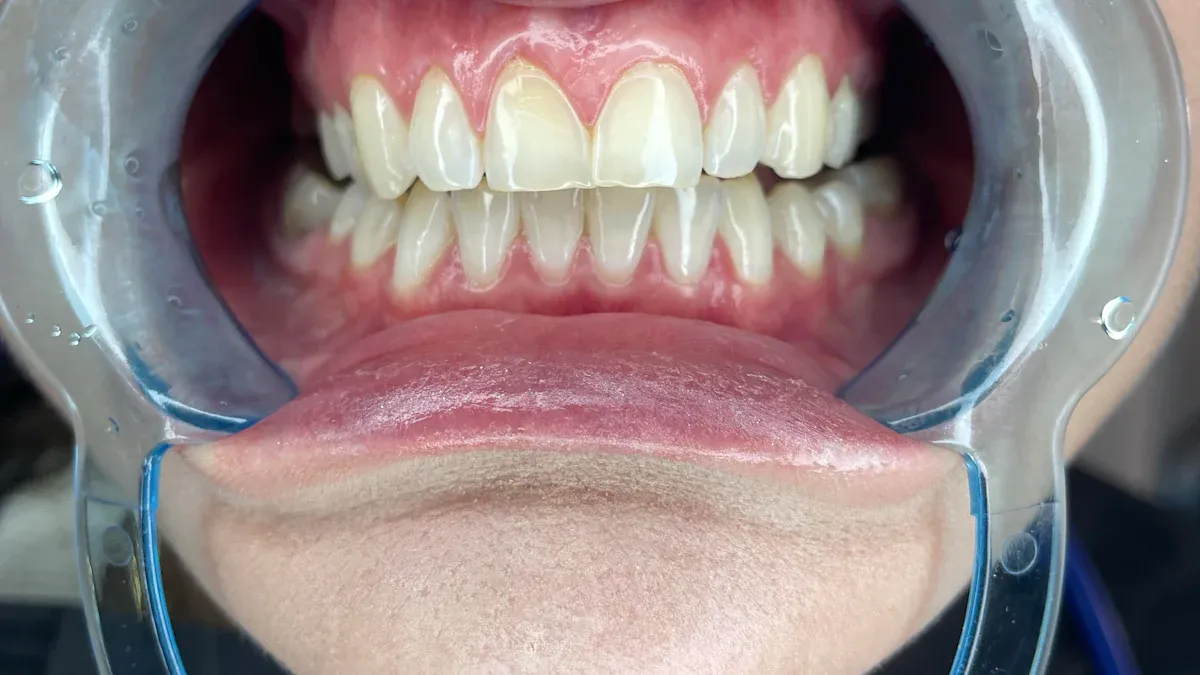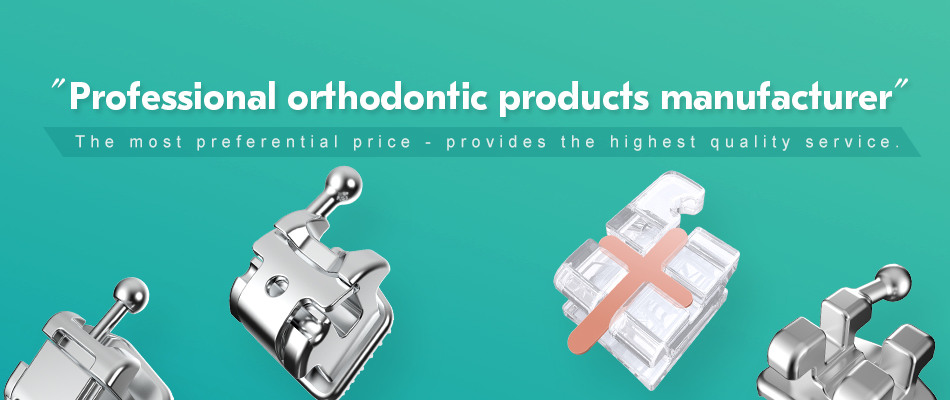Affordable braces brackets play a critical role in addressing the growing demand for orthodontic care across Southeast Asia. The Asia-Pacific orthodontics market is on track to reach $8.21 billion by 2030, driven by rising oral health awareness and advancements in dental technology. Dental chains can enhance accessibility by collaborating with Southeast Asia dental suppliers to secure cost-effective solutions.
Key Takeaways
- Metal braces brackets cost less and last longer, perfect for fixing big teeth problems.
- Buying in bulk from Southeast Asia suppliers saves money and keeps braces brackets available for dental chains.
- Payment plans and insurance can help patients afford braces, making dental care easier to get.
Types of Braces Brackets

Orthodontic treatments rely on various types of braces brackets, each designed to address specific dental needs. Dental chains in Southeast Asia can benefit from understanding these options to provide tailored solutions for their patients.
Metal Braces Brackets
Metal braces brackets are the most common and cost-effective option. Made from stainless steel or titanium, they are highly durable and suitable for correcting severe misalignments. These brackets typically cost between $3,000 and $6,000, making them an affordable choice for dental clinics. Their strength and reliability ensure effective treatment outcomes, especially for complex cases.
Ceramic Braces Brackets
Ceramic braces brackets offer a more aesthetic alternative to metal brackets. They blend with the natural color of teeth, making them less noticeable. According to market data, 76% of adult patients prefer ceramic brackets for their discreet appearance. However, they are more prone to breakage and discoloration, which may lead to higher maintenance costs. The ceramic braces market is projected to grow at a CAGR of 6.80% from 2024 to 2032, reflecting their increasing popularity.
Self-Ligating Braces Brackets
Self-ligating braces brackets eliminate the need for elastic bands by using a built-in clip to hold the archwire. This design reduces friction and allows for quicker adjustments. While studies show no significant difference in long-term stability compared to conventional brackets, self-ligating options can shorten treatment time and improve patient comfort.
Lingual Braces Brackets
Lingual braces brackets are applied to the back of the teeth, making them invisible from the front. They are ideal for patients seeking a discreet solution. These brackets require customization, such as robotic wire bending, which can increase costs but also reduce treatment duration. Lingual braces effectively address complex dental issues like bite misalignments and crooked teeth.
Clear Aligners
Clear aligners have gained immense popularity due to their comfort and convenience. Recent surveys reveal that 85% of users prefer aligners for their aesthetic appeal. The clear aligners market is expected to grow from $4.6 billion in 2023 to $34.97 billion by 2033, driven by rising demand for personalized orthodontic solutions. While aligners are effective for mild to moderate cases, traditional braces remain the preferred choice for complex treatments.
Dental chains can collaborate with Southeast Asia dental suppliers to access a wide range of braces brackets, ensuring cost-effective and high-quality solutions for their patients.
Cost Factors for Braces Brackets
Understanding the cost factors for braces brackets is essential for dental chains aiming to provide affordable orthodontic care. Several elements influence pricing, from material quality to regional market dynamics.
Material Costs
The quality of materials used in braces brackets significantly impacts their cost. High-quality brackets ensure durability and consistent performance, reducing the likelihood of treatment delays or complications. Substandard materials, on the other hand, may lead to failures, increasing overall expenses. Rigorous testing and adherence to material standards enhance product reliability, ultimately improving cost efficiency for dental chains.
Manufacturing Costs
Manufacturing costs play a pivotal role in determining the price of braces brackets. Factors such as labor costs, production efficiency, and technological advancements influence these expenses. For instance, automated production lines, like those used by leading manufacturers, help reduce labor costs while maintaining high output levels. This efficiency allows dental chains to access cost-effective solutions without compromising quality.
Regional Pricing Differences
Pricing for braces brackets varies across Southeast Asia due to differences in labor costs, market demand, and healthcare infrastructure. The table below highlights regional pricing disparities:
| Country | Price Range (Local Currency) | Notes |
|---|---|---|
| Malaysia | RM5,000 – RM20,000 (private) | Competitive pricing compared to Singapore. |
| RM2,000 – RM6,000 (government) | Lower cost options available. | |
| Thailand | Lower than Malaysia | Generally more affordable. |
| Singapore | Higher than Malaysia | Prices are comparatively higher. |
| Indonesia | Lower than Malaysia | Competitive pricing in the region. |
These differences emphasize the importance of sourcing braces brackets from Southeast Asia dental suppliers to leverage regional advantages.
Bulk Purchasing Benefits
Bulk purchasing offers significant cost savings for dental chains. Suppliers often provide discounts for large orders, reducing the per-unit cost of braces brackets. This approach not only lowers expenses but also ensures a steady supply of orthodontic products. Collaborating with Southeast Asia dental suppliers enables dental chains to secure high-quality brackets at competitive prices, enhancing their ability to deliver affordable care.
Comparing Private and Government Clinics

Cost Analysis
Private and government clinics differ significantly in cost structures. Private clinics often charge higher fees due to operational expenses, including advanced equipment and personalized services. In contrast, government clinics offer lower costs, supported by subsidies and Medicaid reimbursement. The table below highlights key differences:
| Aspect | Private Clinics | Government Clinics |
|---|---|---|
| Reimbursement Rates | Higher usual and customary fees | Substantially lower Medicaid reimbursement |
| Overhead Costs | Increasing due to operational costs | Increased due to paperwork and staffing for Medicaid |
| Patient Demographics | More diverse insurance coverage | Primarily Medicaid patients with barriers |
Private clinics also benefit from in-house services, which reduce costs by 36% and increase procedure volume by over 30%. These efficiencies make private clinics a viable option for patients seeking preventive care.
Quality of Care
Private clinics generally provide higher-quality care due to better resources and advanced technology. They offer consistent treatment availability and customized services, ensuring patient satisfaction. Government clinics, while cost-effective, often face challenges such as limited funding and outdated equipment. These limitations can impact the quality of care, especially for complex cases requiring advanced orthodontic solutions.
Accessibility
Accessibility varies between private and government clinics. Private clinics are more geographically widespread, making them easier to access. However, they may refuse complex cases, such as those involving bed-ridden elderly patients, due to limited facilities. Government clinics, while more inclusive, often face physical accessibility challenges. For example, many clinics are located on upper floors, making them difficult to reach for older adults or individuals with disabilities. Public awareness campaigns could improve access to government dental services, especially in rural areas.
Advanced Treatment Options
Private clinics excel in offering advanced treatment options, including clear aligners and self-ligating braces. These clinics invest in cutting-edge technology, enabling them to address complex dental issues efficiently. Government clinics, on the other hand, focus on basic orthodontic care due to budget constraints. Collaborating with Southeast Asia dental suppliers can help both private and government clinics access affordable, high-quality braces brackets, enhancing treatment options for patients.
Payment and Insurance Options
Dental chains in Southeast Asia can improve affordability and accessibility by offering diverse payment and insurance options. These strategies help patients manage treatment costs while ensuring clinics maintain profitability.
Financing Plans
Flexible financing plans make orthodontic care more accessible. Clinics can offer options such as:
- Dental Savings Plans: These provide 20%-25% savings on orthodontic treatments without annual spending limits.
- Flexible Payment Plans: Patients can spread costs over the treatment period with manageable monthly payments.
- Dental Credit Cards: These cards often include interest-free promotional periods, simplifying payment management.
- Personal Loans: These loans typically have lower interest rates than credit cards, making them a viable option for orthodontic care.
- Community Health Programs: These programs may provide free or low-cost services for eligible individuals.
Discussing these options with patients ensures alignment between treatment plans and financial capabilities. Open communication with orthodontists can also lead to personalized financing solutions.
Insurance Coverage
Insurance plays a vital role in reducing the financial burden of braces brackets. Orthodontic benefits typically cover 25%-50% of treatment costs. For instance, if a treatment costs $6,000 and the plan covers 50%, the insurance pays $3,000. Lifetime maximum benefits for orthodontic treatments usually range from $1,000 to $3,500. Dental chains should educate patients about their insurance options to maximize coverage and minimize out-of-pocket expenses.
Discounts for Bulk Purchases
Bulk purchasing offers significant cost advantages for dental chains. Group purchasing organizations (GPOs) negotiate better pricing for members, enabling clinics to access discounts unavailable to individual buyers. The table below highlights key trends in bulk purchasing:
| Evidence Description | Source |
|---|---|
| GPOs negotiate better pricing for dentists, leading to exclusive discounts. | Dental Products Report |
| Higher volume allows GPOs to secure better pricing for members. | Dental Products Report |
| Prenegotiated special pricing is available for various dental supplies. | Dental Economics |
| Strong supplier relationships lead to better pricing and discounts. | FasterCapital |
Collaborating with Southeast Asia dental suppliers ensures access to high-quality braces brackets at competitive prices, further enhancing cost efficiency.
Partnerships with Southeast Asia Dental Suppliers
Strategic partnerships with Southeast Asia dental suppliers enable clinics to secure reliable and affordable orthodontic products. Suppliers in the region often offer competitive pricing due to lower manufacturing costs and regional advantages. By fostering strong relationships with these suppliers, dental chains can ensure a steady supply of braces brackets while maintaining high standards of care.
Affordable braces brackets, such as metal, ceramic, and self-ligating options, offer cost-effective solutions for Southeast Asia dental chains. Comparing clinics ensures better pricing and care quality. Exploring payment plans like financing options or bulk discounts reduces costs. Partnering with reliable suppliers helps dental chains maintain affordability while delivering high-quality orthodontic care.
Tip: Collaborate with trusted Southeast Asia suppliers to secure competitive pricing and ensure consistent product availability.
FAQ
What are the most cost-effective braces brackets for dental chains in Southeast Asia?
Metal braces brackets are the most cost-effective option. They offer durability and affordability, making them ideal for dental chains aiming to provide accessible orthodontic care.
How can dental chains reduce the cost of braces brackets?
Dental chains can reduce costs by purchasing in bulk, partnering with Southeast Asia suppliers, and utilizing automated production lines to access high-quality brackets at competitive prices.
Are clear aligners suitable for all orthodontic cases?
Clear aligners work best for mild to moderate cases. For complex misalignments, traditional braces, such as metal or self-ligating brackets, remain the preferred choice for effective treatment.
Tip: Dental chains should evaluate patient needs and collaborate with trusted suppliers to ensure the right orthodontic solutions at affordable prices.
Post time: Apr-12-2025


